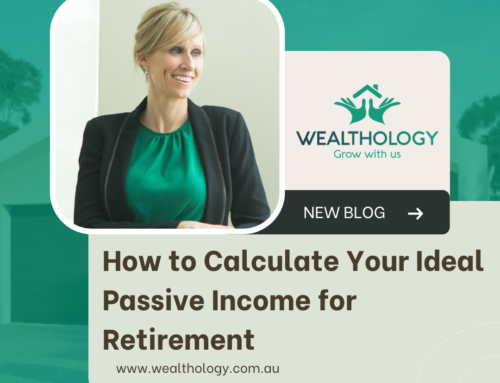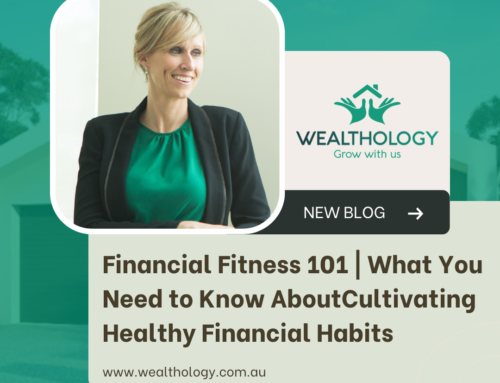You’d be forgiven for thinking Australia was on the cusp of
a monumental property crash due to recent commentary by so-called ‘property
experts’.
Whilst nothing in life is guaranteed, I’m confident that
this is not the case. So much so that I’d put my house on it, quite literally.
Recently I was challenged by a client who reached out in a
panic about the so-called looming property crash. She said, “Leonie, what makes
you so sure that the market’s not about to crash?”.
As someone who is educated on financial and real estate
markets, I understand that property moves in cycles and what we are
experiencing is entirely expected.
In this blog, I’ll be providing insight into how the
Australian property cycles work and why investors should be positioning
themselves to take advantage of the next phase of the cycle.
What Are the Stages of a Property Cycle?
There are four main stages of a property cycle – boom,
slowdown, stabilisation and recovery.
Boom
Historically, the boom stage is the shortest stage of a
property cycle. During this phase, property prices tend to rise sharply across
the broader market.
Often property prices can increase by 20% per annum or more,
and this phase tends to push prices in an upward direction across the wider
Australian market, baring external factors in micro markets.
Slowdown
If only the booms would last forever, but 20% gains over a
prolonged period are not sustainable. Just like everything in life, all good
things must end.
After a boom stage, the market enters what we refer to as
the ‘slowdown’ period. This period is often triggered by a change in the interest
rate and rising unaffordability.
Throughout the slowdown phase, you’ll see less market
activity as consumer confidence dips. Therefore, supply increases, and often a
momentary drop in prices occurs.
Stabilisation
After the market adjusts and settles, the market enters the stabilisation
phase. Things are neither booming nor dropping. Things are relatively calm
throughout this period.
The balance between supply and demand is in equilibrium,
meaning the market remains steady or may increase very slightly.
Buyers steadily re-enter the market, often incentivised by a
decrease in interest rates and having sat tight for much of the slowdown phase;
demand is building in preparation for the next boom phase.
In my opinion, the slowdown and stabilisation phase provides
the greatest opportunity for investors to capitalise on the next boom phase of
the cycle.
Recovery
The recovery phase is often associated with dropping vacancy
rates, rising yields and steady property price growth.
These three elements combined make the acquisition of real
estate attractive for investors as returns are higher than any other stage of
the cycle.
Throughout the recovery stage, you’ll begin to see
developers and builders kick off significant projects in preparation for the
cycle’s impending boom stage.
And then….. we start from the top again.
How Long Does This All Take to Happen?
Countless factors affect the length of a property cycle. The
media generally focuses on short-term factors such as interest rates, whereas
strategic investors should be paying attention to long-term influences.
Many believe that a property cycle lasts seven years, and there’s
no exact timeline on how long a property cycle lasts.
Historically, property prices have peaked in 1981, 1987, 1994,
2003, 2010 and 2017. Therefore, it’s easy to understand why people come to that
conclusion.
The general consensus is that a cycle will last between
seven and nine years. However, the length of a cycle can be affected by factors
such as pandemics, social and political issues and the general state of the
economy.
The Government can also shorten or lengthen cycles by
changing taxation policies and manipulating interest rates to encourage or
discourage borrowing.
Do All Locations Follow the Same Cycle?
Absolutely not! Many people generalise about the Australian
property market. However, there are many submarkets within Australia. Different
capital cities around Australia are at various stages of the cycle and are
affected by different local factors.
For example, Brisbane continues to perform despite Sydney
and Melbourne being in the ‘downturn’ stage of the cycle.
Brisbane is expected to have a minimal “downturn” period due
to the 2032 Brisbane Olympics and the massive amount of infrastructure and
employment opportunities expected for the region.
Generalising the Australian property market into one big
cycle is a common mistake often made by first-time investors or inexperienced
property buyers.
Every day there is an opportunity to profit through real
estate, regardless of the stage of the cycle.
One of the best bits of advice I ever received was “don’t
wait to buy real estate, buy real estate and wait”.
Feel free to reach out if you’d like to discuss this or your
own personal financial situation.





